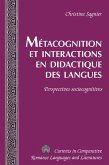Given the consolidated position of English as the international language for communication in business and management, this book depicts a wide scenario in which to analyse and compare interactions between eastern/western European users of English, as well as Asian/European/North American speakers. From each chapter, different sociolinguistic realities emerge. They affect English, as used largely by non-native speakers, but also the relationship between local or national cultures and the global professional discourse community.
In this context not only the specialized lexis is analysed, but rather the ways in which different geo-political cultures construe, manifest and establish their identities. Although it is difficult to classify pragmatic usages of language, the six chapters in the first section deal with language and culture following a genre-based approach, whereas the six chapters of the second section specifically consider corporate identity in intercultural interactions.
This volume, which aims to avoid stereotypes and promote mutual understanding, is the offspring of a two-day seminar as part of the 10th ESSE (European Society for the Study of English) Conference, held in Turin, August 2010.
In this context not only the specialized lexis is analysed, but rather the ways in which different geo-political cultures construe, manifest and establish their identities. Although it is difficult to classify pragmatic usages of language, the six chapters in the first section deal with language and culture following a genre-based approach, whereas the six chapters of the second section specifically consider corporate identity in intercultural interactions.
This volume, which aims to avoid stereotypes and promote mutual understanding, is the offspring of a two-day seminar as part of the 10th ESSE (European Society for the Study of English) Conference, held in Turin, August 2010.
Dieser Download kann aus rechtlichen Gründen nur mit Rechnungsadresse in A, B, BG, CY, CZ, D, DK, EW, E, FIN, F, GR, HR, H, IRL, I, LT, L, LR, M, NL, PL, P, R, S, SLO, SK ausgeliefert werden.
«Definitely, this book is an excellent contribution to the world of intercultural communication in the business world. Researchers interested in the topic will find it useful for the main topics researched (Asian business culture, or interaction between the Western and Eastern intercultural business communication) and, particularly, for the methodological issues followed (different quantitative and qualitative approaches in discourse analysis).» (Miguel F. Ruiz-Garrido, Ibérica 26, 2013)









